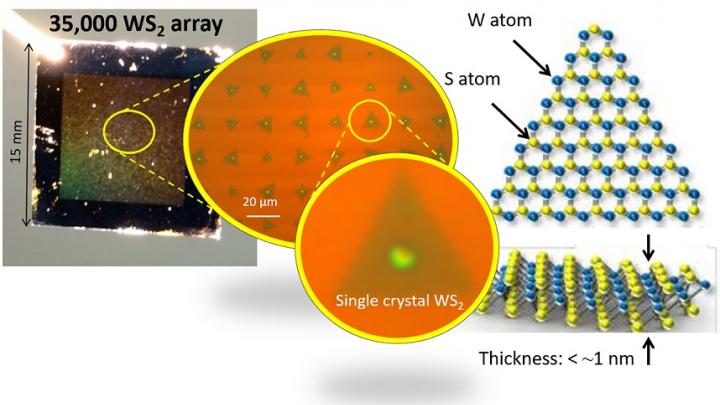In Japan Science and Technology Agency’s Strategic Basic Research Programs, Associate Professor Toshiaki Kato and Professor Toshiro Kaneko of the Department of Electronic Engineering, Graduate School of Engineering, Tohoku University succeeded in clarifying a new synthesis mechanism regarding transition metal dichalcogenides (TMD)1), which are semiconductor atomic sheets having thickness in atomic order.
Because it is difficult to directly observe the aspect of the growing process of TMD in a special environment, the initial growth process remained unclear, and it has been desirable to elucidate a detailed mechanism of synthesis to obtain high-quality TMD.
An in-situ observing synthesis method2) has been developed by our research group to examine the growth aspect of TMD as a real-time optical image in a special high temperature atmosphere of about 800°C in the presence of corrosive gases. In addition, a synthesis substrate, which is a mechanism to control diffusion during the crystal growth of a precursor3), has been developed in advance; further, it has been clarified that the growing precursor diffuses a distance about 100 times larger than in conventional semiconductor materials. It was also demonstrated that nucleation occurs due to the involvement of the precursor in a droplet state. Furthermore, by utilizing this method, a large-scale integration of more than 35,000 monolayer single crystal atomic sheets has been achieved on a substrate in a practical scale (Figure 1).
Utilizing the results of the present research, the large-scale integration of atomic-order thick4) semiconductor atomic sheets can be fabricated and is expected to be put into practical use in the field of next-generation flexible electronics.
